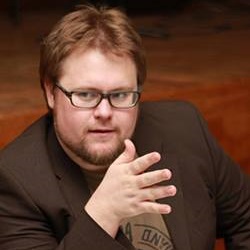Rikard Johansson

Rikard PhD theis describes how Systems Biology can drive drive the growth of scientific knowledge and be applied in Biomedicine, using model-based hypothesis-testing. Rickard defended his thesis 2017 and a summary of his work is found below.
The utilization of mathematical tools within biology and medicine has traditionally been less widespread compared to other hard sciences, such as physics and chemistry. However, an increased need for tools such as data processing, bioinformatics, statistics, and mathematical modeling, have emerged due to advancements during the last decades. These advancements are partly due to the development of high-throughput experimental procedures and techniques, which produce ever increasing amounts of data. For all aspects of biology and medicine, these data reveal a high level of inter-connectivity between components, which operate on many levels of control, and with multiple feedbacks both between and within each level of control. However, the availability of these large-scale data is not synonymous to a detailed mechanistic understanding of the underlying system. Rather, a mechanistic understanding is gained first when we construct a hypothesis, and test its predictions experimentally. Identifying interesting predictions that are quantitative in nature, generally requires mathematical modeling. This, in turn, requires that the studied system can be formulated into a mathematical model, such as a series of ordinary differential equations, where different hypotheses can be expressed as precise mathematical expressions that influence the output of the model.
Within specific sub-domains of biology, the utilization of mathematical models have had a long tradition, such as the modeling done on electrophysiology by Hodgkin and Huxley in the 1950s. However, it is only in recent years, with the arrival of the field known as systems biology that mathematical modeling has become more commonplace. The somewhat slow adaptation of mathematical modeling in biology is partly due to historical differences in training and terminology, as well as in a lack of awareness of showcases illustrating how modeling can make a difference, or even be required, for a correct analysis of the experimental data.
In this work, I provide such showcases by demonstrating the universality and applicability of mathematical modeling and hypothesis testing in three disparate biological systems. In Paper II, we demonstrate how mathematical modeling is necessary for the correct interpretation and analysis of dominant negative inhibition data in insulin signaling in primary human adipocytes. In Paper III, we use modeling to determine transport rates across the nuclear membrane in yeast cells, and we show how this technique is superior to traditional curve-fitting methods. We also demonstrate the issue of population heterogeneity and the need to account for individual differences between cells and the population at large. In Paper IV, we use mathematical modeling to reject three hypotheses concerning the phenomenon of facilitation in pyramidal nerve cells in rats and mice. We also show how one surviving hypothesis can explain all data and adequately describe independent validation data. Finally, in Paper I, we develop a method for model selection and discrimination using parametric bootstrapping and the combination of several different empirical distributions of traditional statistical tests. We show how the empirical log-likelihood ratio test is the best combination of two tests and how this can be used, not only for model selection, but also for model discrimination.
In conclusion, mathematical modeling is a valuable tool for analyzing data and testing biological hypotheses, regardless of the underlying biological system. Further development of modeling methods and applications are therefore important since these will in all likelihood play a crucial role in all future aspects of biology and medicine, especially in dealing with the burden of increasing amounts of data that is made available with new experimental techniques.
Read Rikard's thesis here.
